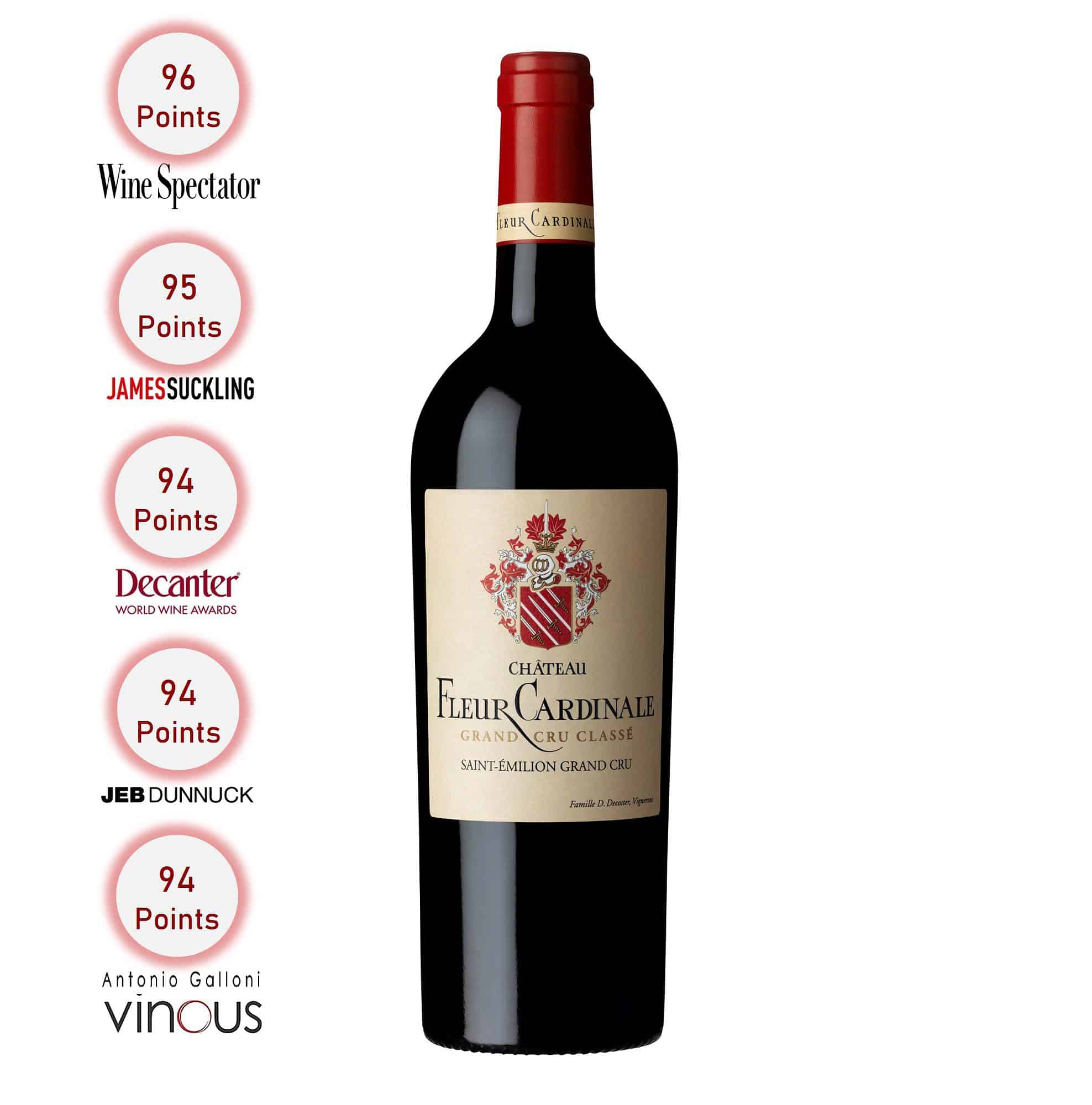75cl / 14.5%
“The Grand Vin 2018 Château Fleur Cardinale has integrated its oak elevage beautifully and while it has a kiss of modern character and polish, it still has loads of classic Saint-Emilion character, as well as minerality.
Deep ruby/plum hued with a gorgeous bouquet of black cherries, white truffles, camphor, lead pencil, and exotic spices, it hits the palate with full-bodied richness, a beautifully balanced, layered texture, building, firm tannins, and a great finish.
It’s certainly in the same class as the 2015 and 2016, but the cellar is going to be your friend.”
~ Jeb Dunnuck
RM368.00
Château Fleur Cardinale is a Saint-Emilion Grand Cru Classé.
The more impatient among you can start discovering it four years after the harvest, but in this case it should be decanted for several hours beforehand.
For those who are more patient, Château Fleur Cardinale is a wine that ages extremely well. It remains fresh and lively after the first decade and will stay in excellent form for the next ten years, acquiring additional maturity. It will then reach a ripe old age, silently resting, waiting in your cellar.
Colour: Deep garnet-ruby
Nose: Offers lovely fruit, with exotic plum and boysenberry notes gliding along, carried by a very velvety structure.
Palate: The long finish has a nice flow, showing a latent anise echo. Seems to be holding back a bit, but there’s some serious depth of fruit here (WS) Optimal tasting period: 2022 – 2042.
Grape Varieties: 74% Merlot, 22% Cabernet Franc, 4% Cabernet Sauvignon
Aging: 12 to 14 months in new French oak barrels
Awards: 96pts – Wine Spectator; 95pts – James Suckling; 94pts – Decanter; 94pts – Wine Cellar Insider; 94pts – Jeb Dunnuck; 94pts – Vinous-Antonio Galloni; 94pts – Wine Enthusiast; 93pts – Wine Advocate-Parker
A Grand Cru Classé, Château Fleur Cardinale produces wines that reflect the Decoster family’s philosophy: creating wines that reflect their passion for the Saint-Émilion terroir all while treating the land with the utmost respect.
The history of Château Fleur Cardinale’s rise to glory has been shaped by human passion and the undeniable quality of the terroir. The estate owes its current name, Château Fleur Cardinale, to Jean-Louis Obissier, son of the mayor of Villerouge-Termenes who purchased Clos Bel-Air in 1975. It is said that the Obissier family owned race horses at the time, by the names of Fleur and Cardinale. After the death of his race horses, Mr. Obissier changed the name of the estate to Château Fleur Cardinale.
Château Fleur Cardinale watches over a 23.1-hectare vineyard in the Saint-Émilion appellation, which comprises an array of terroirs with 6 different soils and sub-soils of clay-limestone origin.
In May 2001, Dominique and his wife Florence decided to buy Château Fleur Cardinale from the Asséo family who had owned the estate since 1982. The family was drawn to the quality of life here and the welcome they received from those in the wine trade. As soon as they arrived in 2001, Florence and Dominique decided to keep the team that had been working there for several years and surround themselves with knowledgeable advisers: an agricultural engineer, an oenologist and their neighbour Jean-Luc Thunevin, the owner of Château Valandraud, who is now the estate’s general consultant. These strategic decisions earned Château Fleur Cardinale the rank of Saint-Emilion Grand Cru Classé in 2006.
Having attained the status of Saint-Emilion Grand Cru Classé in 2006 and again in 2012, Château Fleur Cardinale has quickly become a blue chip of the Saint-Emilion appellation noted for its consistent quality and very good scores for every vintage.

| Brand | |
|---|---|
| Return Policy | Non-Returnable : This product is non-returnable due to exclusivity/consumable nature of the product. |
| SID | D12TNY |
| Country | Bordeaux, France |
| Product Type | Red |
| Grape Variety | Cabernet Franc, Merlot |
Discover our diverse range of flavourful alternatives, ready to surprise and delight your palate.
Industry-leading security powered by iPay88 & Stripe.
Besides Visa & Mastercard, we also accept T&G, Grab, and other eWallets
Unleash your passion for wine and spirits! Join our community of enthusiasts for insider perks, early access to new arrivals, free tastings, exclusive events, discounts, and unforgettable wine experiences.
Become a MyWine Club member today!
A curated website for fine wines, spirits, cigars, food and unique dining experiences too.
Click HERE to find out how to list your event on DiineOut.com or please contact our Hotline (Whatsapp Only): +6018-201 2821.